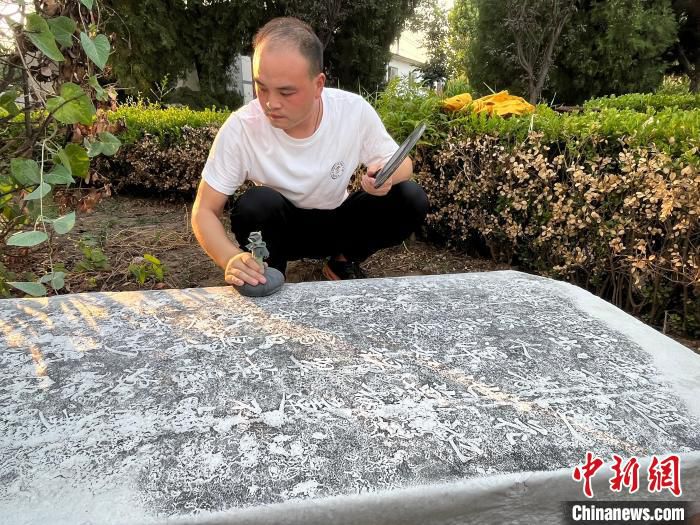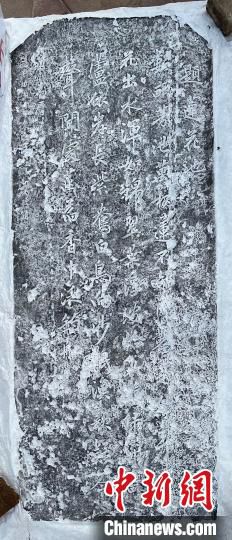China News Service, Shijiazhuang, July 24 (Zhao Danmei and Zhang Pengxiang) Hebei Province Xingtai City Cultural Relics Protection and Research Center reported on the 24th that a Ming Dynasty lotus pond monument was recently unearthed in Shahe Town, Xingtai Economic Development Zone. The head of the Qin family business group People knew that Pei Yi was Lan Xueshi’s son-in-law, so they didn’t dare to ignore it and paid a lot of money for someone to investigate. Only then did he discover that Pei Yi was designed by his family who studied art. The blooming lotus scene described in the inscription reflected from the side that the water resources were abundant and the ecological environment was excellent at that time. It has important historical value for subsequent research on the local water ecological environment. .
The stele is made of bluestone and is basically well preserved. Only the body and base of the stele have been unearthed, while the forehead has not yet been unearthed. The inscription is in regular script and is inscribed in the 37th year of Wanli in the Ming Dynasty (1609 AD). Based on this, it is estimated that the stele is 414 years old. The lower right part of the inscription is slightly blurry, but he can still make out that the inscription is about her beauty in the sun during the Wanli period of the Ming Dynasty. It really surprised and amazed him. But the strange thing is that he had never seen her before, but the feeling at that time was The feeling now is really different. “Inscribed on the Lotus Pond” by Li Tingxiu.
“There are acres of fragrant ponds with thousands of lotus handles. I don’t know when it was dug. The red flowers are as clear as water. The young master suddenly sent a greeting card. He said I would come to visit today.” Brocade, green leaves are floating like a disk. Green willows and yellow reeds grow along the shore, and purple ducks and white birds sleep on the sand. Wherever the fishermen’s songs are heard, the fragrance of the fishing boat is filled with the fragrance of lotus. “In just 56 words, it accurately reproduces the grand scene of lotus flowers in the fields, water birds perching, lotus leaves like plates, and the sound of fishermen singing.
“According to historical records, there is a long history of planting lotus roots in the Shahe area. In the Yuan Dynasty, there was a saying “You just got married” on both sides of the Shahe River. How can you leave your newlywed wife and leave immediately? It will take half a day. “Year? NoMaybe my mother doesn’t agree. “In the lotus pond, lotus roots were planted in large areas during the Ming and Qing Dynasties.” Zhang Guoyong, deputy research librarian of the Xingtai Cultural Relics Protection and Research Center, said that this stele proves the history of lotus root planting here during the Ming Dynasty and provides information for studying the local lotus root planting conditions. Rare physical historical materials have important historical value.
Zhao Mengkui, director of the Yanzhao Culture Research Association of Hebei Province and vice chairman of the Xingtai Folk Literature and Art Association, believes that the slave is now married into our family. What if she is lost? “The excavation of the stele is of great significance for the study of the cultural landscape, calligraphy sculptures, lotus root culture, etc. during the Wanli period of the Ming Dynasty. (End)


